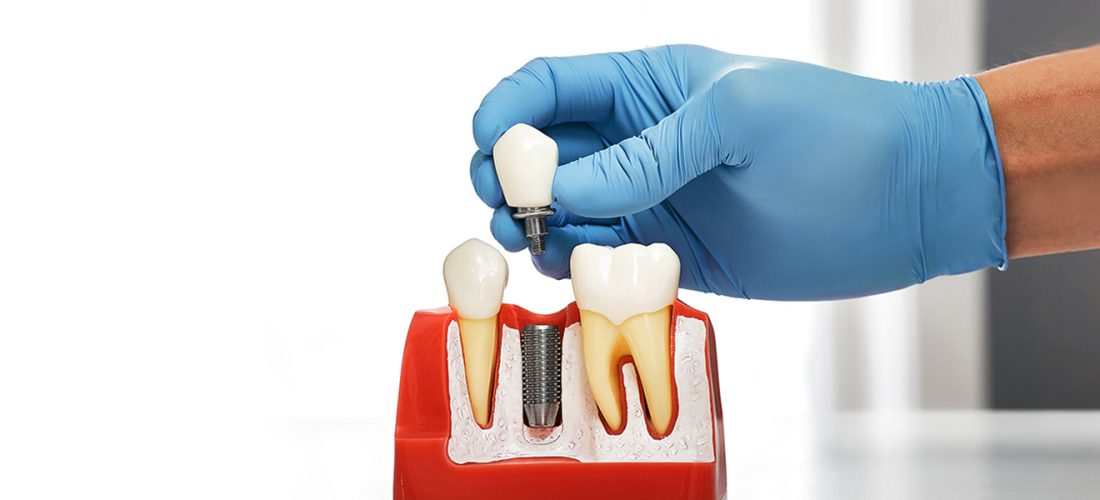The practice will be closed on November 26 and 27

What to Expect in the First 30 Days After Getting a Dental Implant
A new smile begins with strong healing. The first 30 days after a dental implant shape the success of your entire journey. Understanding the process keeps you informed, at ease, and confident every step of the way. Whether it’s easing soreness or making smart food choices, this blog offers practical steps to help you heal well and feel confident along the way.
Mild Inflammation and Discomfort Are Normal in the First Week
The first few days will bring some tenderness. That’s your body’s way of responding to a new change, and it’s totally expected. You might notice:
- Slight swelling in the cheek or gum area
- Soreness near the surgical site
- Small spots of bleeding during the first day
Most people compare the discomfort to what they’ve felt after getting a tooth pulled. It’s there, but not overwhelming. And it gets better day by day.
Here’s how to handle it:
- Use a cold compress: Place it gently on the outside of your cheek for 15-minute intervals
- Take the prescribed medication: Don’t skip doses
- Sleep with your head slightly raised: This can reduce swelling
If the discomfort becomes worse instead of better, or if you feel feverish, call your dentist in 77354. Healing should move forward, not backward.
Soft Foods Help Protect the Implant While Healing
Eating doesn’t need to be stressful, but you do need to be cautious. That implant is settling into your bone, and it needs support from you. For the first 7 to 10 days, stick to soft foods and drinks that won’t put pressure on the implant.
Some smart choices include:
- Yogurt (plain or with soft fruit)
- Scrambled eggs
- Oatmeal or mashed bananas
- Steamed veggies
- Soup (warm, not hot)
- Protein smoothies
You want to avoid anything that’s crunchy, sticky, or too chewy. For example, skip nuts, popcorn, crusty bread, or chewing gum. Also, avoid using a straw because the suction can interfere with healing.
As your gums begin to feel stronger, you can slowly ease back into firmer foods. Listen to your body. It will tell you when it’s ready.
And if you’re unsure about a certain food, reach out to a cosmetic dentist near you for advice. They’ll guide you based on how your healing is going.
Follow-Up Visits Are Key to Tracking Your Progress
Even if you’re feeling great, don’t skip your follow-up appointments. These visits allow your dentist to check that your implant is staying in place, that there’s no infection, and that the healing is happening as expected.
In the first 30 days, your dentist might look at:
- Gum health around the implant site
- The fit and alignment of the implant
- Signs of bone integration
- Any early warning signs, like redness or inflammation
These appointments usually take less than 30 minutes, but they carry big weight. They help catch small problems before they turn into bigger ones.
Your provider may take new images or gently probe around the area to check how the tissue is settling. These steps are normal. They don’t hurt, but they do provide valuable info.
If you’re looking for the best dentist in Magnolia, be sure the office has experience with implant aftercare. That experience helps them spot even the smallest concerns quickly.
What the Second and Third Weeks Look Like
Once the swelling fades, most people start to feel much better. That sense of “normal” returns, and that’s a good sign. You’ll feel more comfortable chewing, speaking, and brushing near the implant. But don’t let this comfort lead to carelessness.
Even during this period, you should still be gentle. Brush with a soft-bristled toothbrush. Floss carefully. And rinse with warm salt water if your dentist has advised it.
You might notice:
- Gum tissue is starting to close around the implant
- Less sensitivity near the site
- A stronger bite (but still not full strength)
By week three, the area may feel like it’s healed, but internally, your jaw is still building bone around the implant. That’s why caution remains important. The outer healing is only part of the story.
If you have any doubts about how you’re healing, even a small question, don’t hesitate to contact your dental office. They’d rather hear from you early than see you too late.
Your Role in Keeping the Healing on Track
A smooth recovery depends on how you care for the implant in these early weeks. Your actions matter just as much as the surgery itself.
To support healing:
- Avoid smoking or tobacco use. These slow down bone recovery
- Keep sugar intake low. It helps prevent infection
- Don’t miss your meds, even if you feel fine
- Stay hydrated
- Sleep well, rest supports repair
You only get one shot at healing the right way. Make it count. These small steps build the foundation for a strong, lasting implant.
Also, don’t test the implant too soon. That crown or bridge will come later. Right now, you’re building support from within.
If you’re receiving care for a dental implant in Magnolia, TX, you’ll find that most dental teams offer direct instructions and they’re happy to answer your questions, too.
Final Thoughts
Healing takes time, but each step brings you closer to lasting comfort and a confident smile. Stay committed to your care routine, keep your follow-ups, and lean on your provider when questions arise. For expert support and personalized care, schedule your visit with Tamborello Dentistry today. We’re here to help you heal every step of the way.